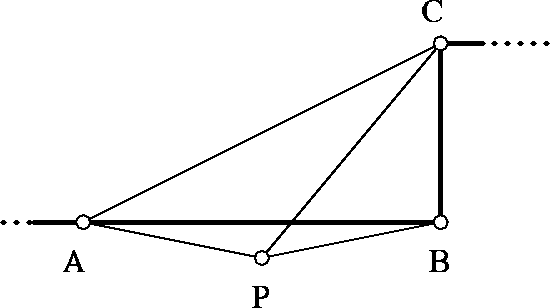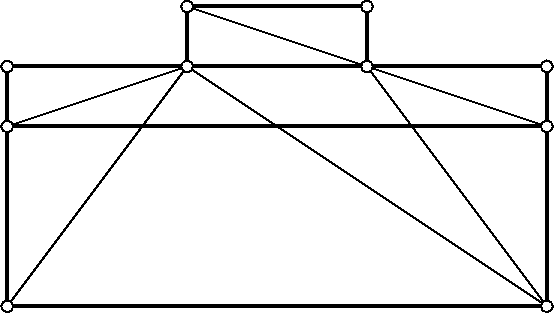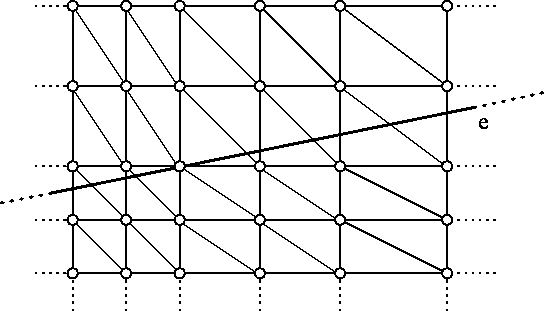6.4.1 Motivation





Next: 6.4.2 Refinement Criterion
Up: 6.4 Boundary Refinement
Previous: 6.4 Boundary Refinement
Boundaries and interfaces of geometries must be
adequately represented by the grids which cover the
geometry . For two-dimensional
triangular grids this implies that the boundary and interface polygons
must be subsets of the union of all grid edges.
The same requirement stated differently is that the triangular grids
must tessellate the segments of the geometry.
. For two-dimensional
triangular grids this implies that the boundary and interface polygons
must be subsets of the union of all grid edges.
The same requirement stated differently is that the triangular grids
must tessellate the segments of the geometry.
As the input geometry and input grid for VORONOI are
potentially specified independently from each other, conformity
between them can not be expected.
A constrained Delaunay triangulation that will yield a
geometry-conforming triangular tessellation of the input segments is
achieved by introducing a boundary refinement step before
the actual triangulation is performed.

Figure 6.13: The Delaunay triangulation of this
configuration of boundary points A, B, C, and grid point
P yields a
non-geometry-conforming grid.
Without this preprocessing step, a direct triangulation of all grid
and geometry points will not yield the desired geometry-conforming grid
(see Figure 6.13). Especially layered geometries and
non-planar structures which occur frequently in VLSI devices may easily cause
non-geometry-conforming triangulations as depicted in Figure 6.14.
The combination of tensor product grids with non-orthogonal geometries
(as shown in Figure 6.15) also inevitably causes
non-geometry-conforming triangulations when no additional boundary
grid points are inserted.

Figure 6.14: A simple example of a layered geometry which,
without boundary refinement,
causes a non-geometry-conforming triangulation

Figure 6.15: Non-geometry-conforming triangulation of a
tensor product grid
The boundary refinement step iteratively applies a refinement
criterion (described next)
to every edge of the boundaries and interfaces which determines
if a given edge needs to be refined. When applicable, the refinement
is done by inserting an additional boundary grid point, thereby splitting the
old boundary edge into two new boundary edges. At the end, all
final boundary edges are ``guaranteed Delaunay edges'', hence they will be
reproduced in the subsequent triangulation step.





Next: 6.4.2 Refinement Criterion
Up: 6.4 Boundary Refinement
Previous: 6.4 Boundary Refinement
Martin Stiftinger
Thu Oct 13 13:51:43 MET 1994
 . For two-dimensional
triangular grids this implies that the boundary and interface polygons
must be subsets of the union of all grid edges.
The same requirement stated differently is that the triangular grids
must tessellate the segments of the geometry.
. For two-dimensional
triangular grids this implies that the boundary and interface polygons
must be subsets of the union of all grid edges.
The same requirement stated differently is that the triangular grids
must tessellate the segments of the geometry.







